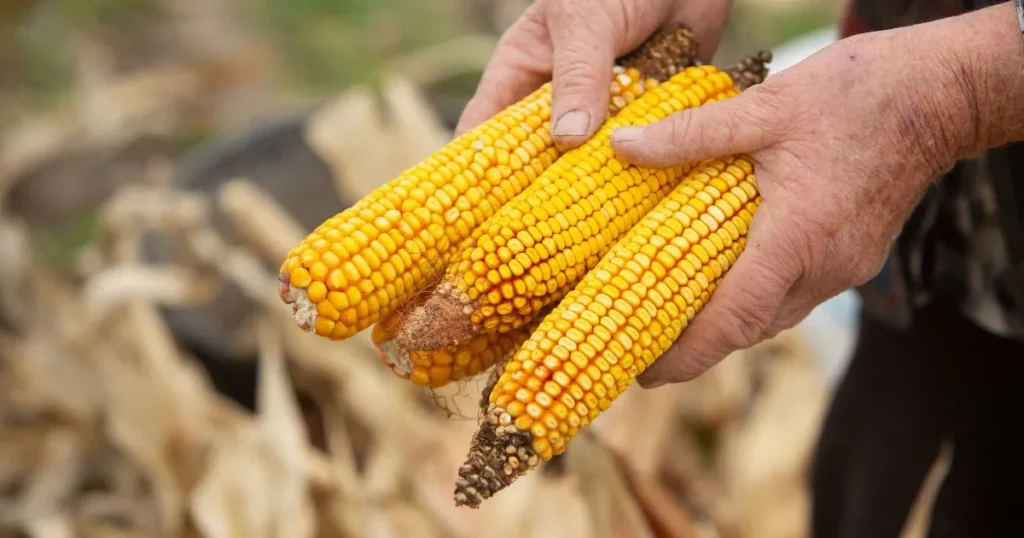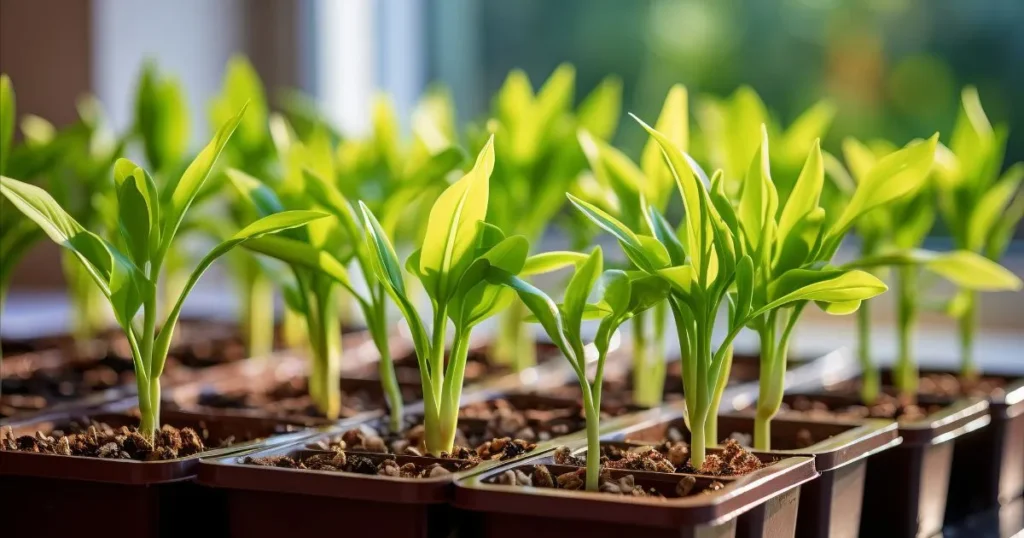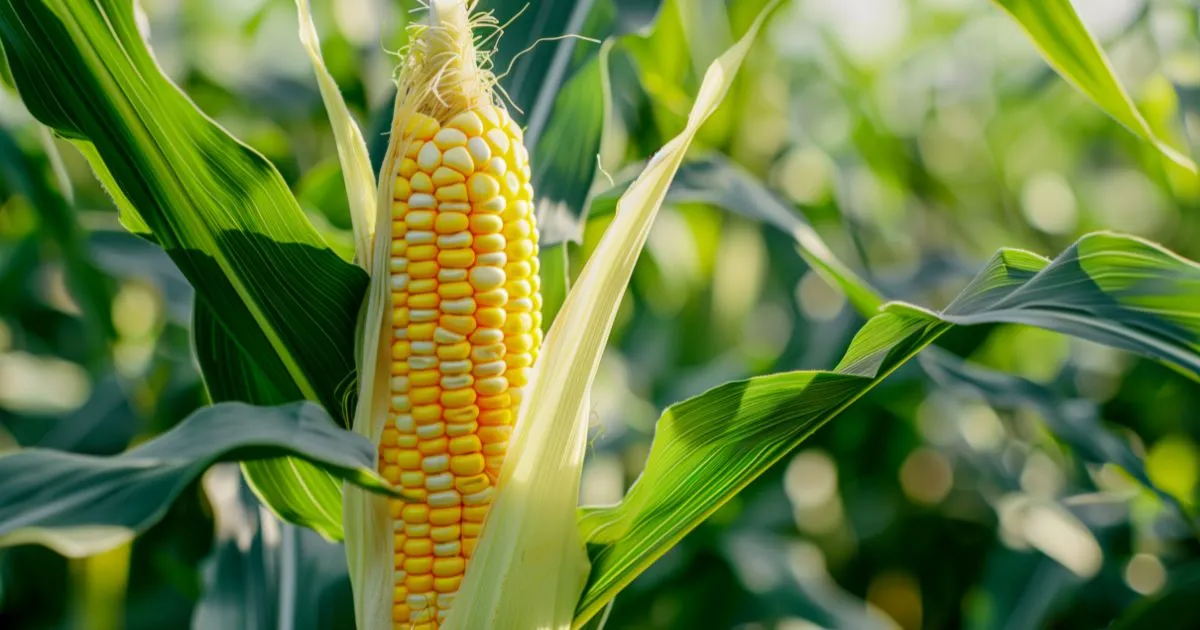Table of Contents
Corn, a staple crop, is known for its tall stalks and vast fields, typically seen swaying in the breeze across large agricultural landscapes. However, not everyone has the space or resources for a sprawling cornfield. If you’re an urban gardener or someone with limited space, growing corn in pots is an excellent way to enjoy this nutritious, delicious crop right at home.
In this guide, we’ll explore the essential steps and tips for successfully growing corn in pots, the challenges you may encounter, and the benefits of container-grown corn. By the end of this article, you’ll be well-equipped to grow corn in pots and reap a bountiful harvest!
Why Grow Corn in Pots?
Limited Space Doesn’t Mean Limited Possibilities
Growing corn in pots may seem like an unusual concept, as corn is traditionally grown in fields where it has ample space to grow tall. However, container gardening has become increasingly popular for those who don’t have the luxury of expansive gardens. Growing corn in pots is perfect for small spaces, like balconies, patios, or rooftops, and it provides the joy of cultivating your own food.
Corn in Containers: What to Expect
When growing corn in pots, you may not get the towering stalks you would from a cornfield, but with the right techniques, you can still enjoy a fruitful harvest. Container corn varieties, especially dwarf or shorter varieties, are available and well-suited for growing in pots. These varieties generally have smaller ears but can still produce flavorful corn, perfect for grilling or boiling.
Types of Corn Suitable for Pots
Dwarf Varieties: Best for Containers
When selecting corn to grow in pots, dwarf varieties are your best bet. These types are bred to be smaller and more compact, making them perfect for container gardening. Some popular dwarf varieties of corn include:
- ‘Miniature Yellow’ Corn: A sweet, compact corn that thrives in containers. It’s great for small gardens or pots.
- ‘Golden Bantam’ Corn: A traditional heirloom variety that grows well in pots and produces small to medium-sized ears of corn.
- ‘Peaches and Cream’ Corn: A sweet, bicolor corn that grows well in containers and is often used in home gardens for its sweetness and texture.

Hybrid Varieties for Improved Yield
If you’re looking to maximize your harvest, hybrid varieties are an excellent choice. They tend to be more disease-resistant and produce higher yields than non-hybrid types. Some hybrid varieties can grow well in pots and offer larger ears of corn, which can be harvested early for sweet, tender kernels.
The Best Containers for Growing Corn
Size Matters: Choosing the Right Pot
The pot you choose for growing corn is one of the most critical aspects of successful container gardening. While corn plants may be compact, they still need sufficient space to grow their roots and support their stalks. Here’s a breakdown of the ideal pot sizes for growing corn:
- Minimum Size: A pot should have a diameter of at least 18 inches and a depth of 12 to 18 inches. Larger containers allow more space for root growth and overall plant health.
- Optimal Size: For better growth and increased yields, choose a pot with a diameter of 24 to 30 inches and a depth of 18 inches or more.
- Material Choice: Plastic, clay, and ceramic pots all work well, but ensure that the container has drainage holes to avoid waterlogging, which can harm the corn’s roots.
Container Tips for Maximum Growth
- Ensure Good Drainage: Make sure your container has several drainage holes. Corn plants don’t like sitting in water, so good drainage is essential.
- Use Well-Draining Soil: Choose high-quality, well-draining potting soil for your corn. Mix in organic compost to improve the soil’s fertility and provide your corn with the nutrients it needs.
Planting Corn in Pots: Step-by-Step Guide
1. Choose the Right Location
Corn thrives in full sunlight, so it’s crucial to pick a spot that receives at least 6-8 hours of direct sunlight daily. If you’re growing corn on a balcony or terrace, ensure it has plenty of light to support strong growth.
2. Prepare the Pot and Soil
As mentioned earlier, use a large pot with good drainage and fill it with nutrient-rich, well-draining soil. Before planting, mix in some compost to boost soil fertility and encourage healthy root growth.
3. Planting Corn Seeds
When planting corn seeds in a pot, space them about 4-6 inches apart, as corn plants need room to grow. Sow the seeds about 1-2 inches deep in the soil. If you’re growing a hybrid variety, follow the seed packet instructions for optimal spacing and depth.
4. Watering Your Corn
Corn plants need consistent moisture to thrive, especially when they are young. Water the plants deeply, but ensure the pot has good drainage to prevent waterlogging. Avoid overhead watering, as this can encourage disease; instead, water at the base of the plants.
5. Fertilizing for Strong Growth
Once your corn plants start to grow, it’s time to fertilize them regularly. Use a balanced fertilizer with equal amounts of nitrogen, phosphorus, and potassium. Fertilize your corn plants every two weeks during the growing season to encourage strong growth and better yields.

Caring for Corn in Pots
1. Staking for Support
Corn plants can grow tall, even in pots, and they need support to prevent them from toppling over. Use stakes or a sturdy trellis to support the stalks as they grow taller. This will prevent wind damage and help the plants remain upright.
2. Pest and Disease Control
Keep an eye on your corn plants for pests, such as aphids, corn earworms, and caterpillars. Organic insecticidal soap can help control these pests. Regularly inspect the leaves for signs of disease, such as yellowing or mold. If you notice any issues, treat them immediately to avoid compromising the plants’ health.
3. Pollination Tips
Corn is wind-pollinated, and when grown in pots, you might have fewer plants than in a field. To ensure good pollination, gently shake the plants every day to encourage the movement of pollen. Alternatively, you can hand-pollinate by transferring pollen from the male tassels to the female ears using a paintbrush or small cloth.
Harvesting Corn from Pots
1. When to Harvest
Corn is ready to harvest when the husks are dry and the kernels are plump and firm. You can check the readiness of your corn by gently pulling back the husk and testing a kernel. If the kernel produces a milky sap when punctured, it’s ready for harvest.
2. How to Harvest
To harvest, grasp the ear firmly and twist it downwards. If the ear is ripe, it will come off the stalk easily. Remove any remaining husks and store your corn in a cool, dry place.
Challenges of Growing Corn in Pots
1. Limited Space for Root Development
One of the primary challenges of growing corn in pots is the restricted space for root development. If the pot is too small, the roots may become constricted, leading to stunted growth and lower yields. This is why choosing the right-sized pot is so critical for success.
2. Pollination Issues
As corn plants are wind-pollinated, having fewer plants in pots can sometimes result in poor pollination. However, hand-pollination or using multiple pots can help resolve this issue and ensure a successful harvest.
3. Watering and Fertilization Needs
Corn plants have high water and nutrient requirements. Container-grown corn can dry out quickly, so it’s important to water regularly. Fertilization is also necessary to maintain healthy growth, but it must be balanced to prevent over-fertilizing, which can harm the plants.
Conclusion: Is Growing Corn in Pots Worth It?
Growing corn in pots may not yield the same massive stalks and quantities as field-grown corn, but it’s a rewarding experience, especially for those with limited space. With the right containers, the right varieties, and consistent care, you can grow corn that’s both delicious and satisfying. Plus, you’ll get the joy of growing your own food and harvesting fresh, homegrown corn.
While growing corn in pots can be challenging due to the limited space, with proper care and attention, you can still have a successful and fruitful corn-growing experience. So, why not give it a try? Growing corn in pots can be a fun and educational project for gardeners of all levels.

Frequently Asked Questions (FAQ)
Can corn grow in small pots?
Yes, corn can grow in smaller pots, but larger pots provide more room for roots and improve overall plant health. Opt for a pot with at least an 18-inch diameter for better results.
How much sunlight does corn need when grown in pots?
Corn requires at least 6-8 hours of direct sunlight each day. Make sure your container is placed in a sunny spot for optimal growth.
How do I pollinate corn in pots?
Since corn is wind-pollinated, you may need to shake the plants gently or hand-pollinate using a paintbrush to transfer pollen from male tassels to female ears.
What type of soil is best for growing corn in pots?
Use well-draining potting soil enriched with compost. This will provide your corn plants with the nutrients they need and ensure proper drainage.
How often should I water my container-grown corn?
Corn needs consistent moisture, so water it regularly. Make sure the pot has good drainage to prevent waterlogging, which can harm the roots.

